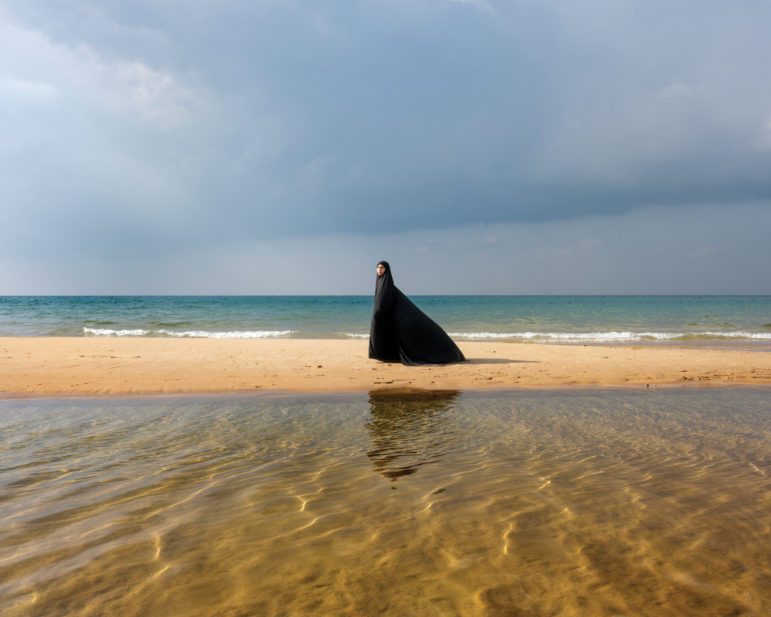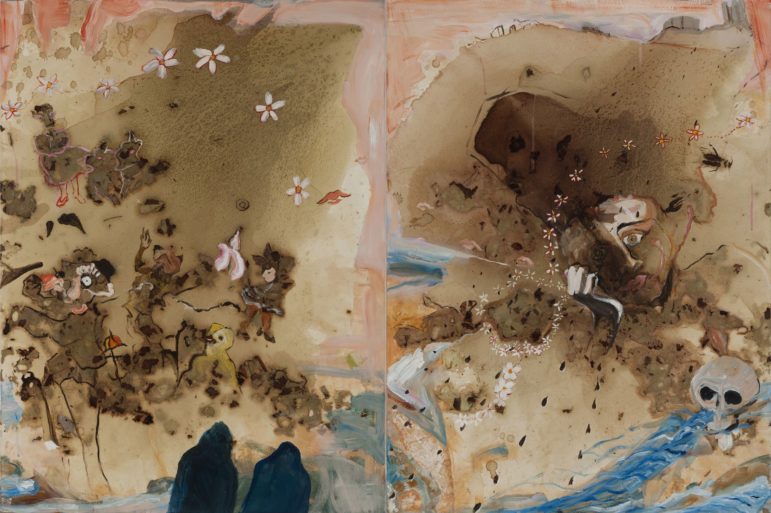
Rania Matar Photographer Rania Matar’s work will be on display at an upcoming exhibition at the Mosesian Center for the Arts in Watertown.
The Mosesian Center for the Arts announced it will host two upcoming art exhibits. The MCA provided the following information:
At Mosesian Arts, themes of displacement, migration, immigration, and cultural identity take center stage
Across Cultures: Invisible Ties and Journeys of Hope
May 5 – June 30, 2022
Opening Reception: Thursday, May 26, 5:30–7:30 PM
Across Cultures: Invisible Ties and Journeys of Hope, the upcoming exhibition at Mosesian Arts, reflects on ideas of displacement, migration, immigration, and the complexity of navigating different cultures. In this group exhibition, artists address issues from how moving geographically shapes one’s cultural identity, to the discourse around immigration in the last few years, to bringing awareness to diverse points of view. It was juried by Lebanon-born and Boston-based artists Rania Matar.
SHE: Photographs by Rania Matar
May 5 – June 30, 2022
Closing Reception: TBA
Photographs by Rania Matar will be on view in the Watertown Savings Bank gallery on MCA’s 2nd floor. This exhibition coincides with Journeys, our 2022 Annual Benefit & Mosesian Awards Event, at which Rania will the recipient of the Mosesian Award for the Arts.
Across Cultures: Invisible Ties and Journeys of Hope
Across Cultures: Invisible Ties and Journeys of Hope, the upcoming exhibition at Mosesian Arts, reflects on ideas of displacement, migration, immigration, and the complexity of navigating different cultures. In this group exhibition, artists address issues from how moving geographically shapes one’s cultural identity, to the discourse around immigration in the last few years, to bringing awareness to diverse points of view. Mosesian Arts aims to provide a space where diversity is celebrated and acknowledged.

The broad range of artworks was selected by Boston-based, Lebanese-born photographer Rania Matar. Matar moved to the U.S. in 1984. As a Lebanese-born American woman and mother, her cross-cultural experience and personal narrative inform her photography. Matar’s work has been widely exhibited in museums worldwide, including the Museum of Fine Arts, Boston, Carnegie Museum of Art, National Museum of Women in the Arts, Minneapolis Institute of Art, Rollins Museum of Art, and more. It is part of the permanent collections of several museums, institutions, and private collections. A mid-career retrospective of her work was recently on view at Cleveland Museum of Art, Amon Carter Museum of Art, American University of Beirut Museum. Matar received a 2018 Guggenheim Fellowship, 2017 Mellon Foundation artist-in-residency grant, 2011 Griffin Museum of Photography Legacy Award, and Massachusetts Cultural Council Artist Fellowships in 2021, 2011, and 2007. In 2008, she was a finalist for the Foster Award at the ICA/Boston, with an accompanying solo exhibition. She has published four books: She, 2021; L’Enfant-Femme, 2016; A Girl and Her Room, 2012; and Ordinary Lives, 2009. An exhibition of select photographs from She will run at Mosesian Arts concurrently with Across Cultures.
At this exhibition, works on paper, paintings, fiber pieces, and small sculptures tell stories and address issues of displacement, immigration, and cultural identity. Tante Rachel’s Thread, an accordion style book by artist Etta Rosen, depicts the journey of a great-aunt who as a child escaped the Cossacks and later as an adult fled Nazi Germany. The book unfolds very much like the journeys made by the protagonist. The maps, copies of old documents, and thread illustrate her life. The thread is particularly important as she used her skills as a seamstress to make a living when she eventually reached the United States. In a large painting titled Blossoms and Bones, artist Marsha Nouritza Odabashian uses onionskin dye, a tradition borrowed from her Armenian ancestors. After boiling the skins, the artist drops the sienna-tinted dye on the canvas then uses acrylic paint to develop a varied cast of characters – human, animal, and hybrid that exist in various states of movement and migration. She writes that her interest in migration reflects the experience of her four Armenian grandparents who were forced to flee to Lebanon, Syria, and the United States because of genocide in their native country. Artist Sandra Mayo’s What Goes Around Comes Around is a world art-map printed on Tyvek. The map depicts routes that migrants, refugees, and asylum seekers take to new countries in search of safety and new homes. The artist chose Tyvek because it is a material used in construction to wrap and protect houses from the elements. In a way, Tyvek becomes a symbol of protection and evokes the idea of home. This piece also raises issues of displacement, colonialism, and political abuse.
Across Cultures is on display at the Mosesian Center for the Arts from May 5 to June 30. The opening reception will be held on May 26, 5:30–7:30 PM.
The mission of The Mosesian Center for the Arts is to enrich the lives of diverse audiences and participants by providing exceptional experiences in theater, visual, and literary art.
Website: www.mosesianarts.org
Facebook: www.facebook.com/mosesiancenterforthearts
Twitter: www.twitter.com/mosesianarts
Instagram: www.instagram.com/mosesianarts